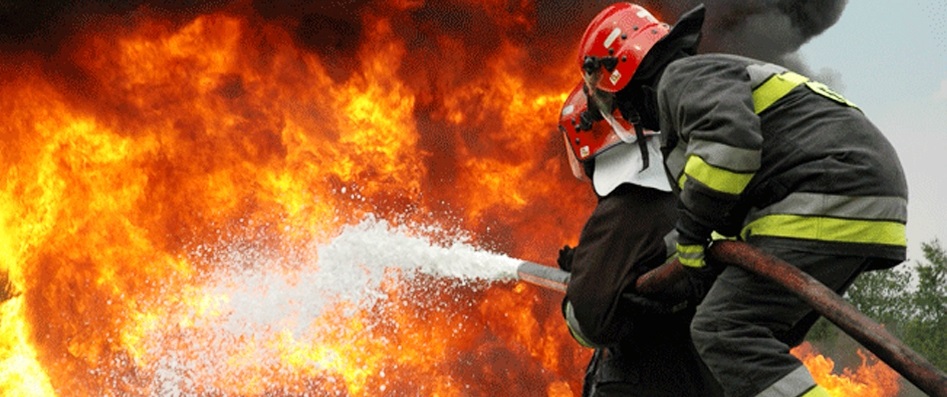Jump to Heading
Course Introduction of Basic Fire Fighting:
OBJECTIVES:
Upon completion of this lesson, you will be able to:
- Names and background information of the instructors, support staff and the other participants.
- The following aspects of the be covered in this lesson:
- Expectations.
- Purpose.
- Objectives.
- Methodology.
- Testing.
- Materials.
- Logistics.
- Course overview.
-
Getting to Know Each Other:
Now we will have an exercise so that you may become familiar with the other participants in the course.
-
Participants’ Expectations:
The purpose of this exercise is to find out what your expectations of the Fire Safety Course are – knowledge you hope to gain, skills you hope to acquire, etc.
-
Course Purpose:
The purpose of the course is to train the participant in the techniques, methods and skills necessary for fire fighting, safety, confined space entry, victim search methods, operation and maintenance of fire pump, fire fighting tools, equipment and accessories.
3.1 Performance Objectives:
Upon completing the Fire Safety Course, you, as part of a team member.
- Complete the correct and necessary actions upon arriving at the scene and before initiating a fire fighting operation.
- Apply the learned techniques methods & skills in real fire scenarios.
- Apply fire fighting skills in a systematic way for a fire scene
4 Proper scene size up, utilization of resources and post fire rehabilitation
3.2 Instructional Objectives:
Upon completing the Fire Safety Course, you will be able to:
- Describe how to organize and start a fire operation.
- Describe the procedure to classify the burning material into suitable class and to extinguish it using the appropriat extinguishing medium.
- List the safety precautions that must be followed in a fire fighting operation.
- Name and describe the use and maintenance of the tools equipment and accessories used in a fire fighting operation
- List and describe the basic techniques for entry into a fir. scene or a building on fire.
Each lesson will introduce its own objectives.
corresponding training
-
Course Materials:
4.1 Participant Workbook (PWB):
The Participant Workbook is your own personal property and J you need to keep it safe. Write your name in magic marker on | the cover sheet in the box.
We have ample space for you to take notes in order to reinforce | the material you are learning. All the material you will be tested on will be drawn directly from the workbook, including some of the spaces you fill in.
Check your workbook to make sure it is complete and that no J pages are missing.
4.2 Reference Material (RM):
Generally, each lesson has its own reference material, which you should study in order to complement the lecture.
You will also receive a glossary and bibliographic references as part of the reference material.
You will be receiving handouts occasionally from your instructors for exercises, assignments, etc.
Participant Equipment:
You should have brought with you to the course a set of personal protective equipment and other work equipment and materials, as indicated:
Required Equipment
- Fire safety helmet.
- Goggles.
- Dust mask.
- Safety steel-toe boots.
- Fire safety gloves.
- Fire turnout gear.
- Safety shoes.
Course Methodology:
The course methodology is highly participatory and allows constant interaction and feedback between the instructors and participants. You will be required to gain some background knowledge as well as acquire manual skills. Objectives are clearly stated at the beginning of each lesson.
Evaluation Method:
You will be evaluated in this course using four methods:
Pre-test: To get a brief idea about your knowledge a pre¬test will be conducted before starting the lesson no-1.
Unit test: see the Fire Safety Course evaluation chart on the next. There are 32 lessons which include a course I
review (lesson 32). Lessons are grouped into 3 units, each
followed by a Unit Test, each one worth 100 points
Post-test: At the end of lesson 32 you will have written course post test. Questions will be in the form of multiple choice or fill- In the blanks as well as short questions.
Note: Post test and each unit test have only one opportunity of make-up test.
- Practical Evaluations: at the end of lesson 32 the participants will be evaluated in the all learned practical skills.
Scoring System:
Unit Tests: All unit tests must be passed with the score of 60 % in order to qualify the final Written & Practical evaluation.
Course Post-Test: It will have 100 marks and must be passed with a score of 60% in order to complete the course.
Practical Evaluations: Practical evaluations are scored as Pass or No-Pass, based on your performance of tasks and attention to safety. If you receive a No-Pass score on a Practical Evaluation, you will be allowed to take one make-up per Practical Evaluation.
Note: In internal and external evaluation system you will have to score 60 % as a whole for passing the course.
- Course Schedule and Attendance:
The rules for attendance and participation are as follows:
Participation in all classes and course activities is mandatory.
Punctuality 1 promotes mutual respect and responsibility I among participants.
Absences and tardiness: Tardiness and missing classes is not acceptable. Only under very special circumstances will an I exception be made for one late arrival, to a maximum of 151 minutes. Missing a class or arriving late for no special reason will disqualify you from passing the course.

John Doe, a seasoned firefighter, shares his vast knowledge of fire safety and emergency preparedness at arescuer.com, aiming to empower and educate

